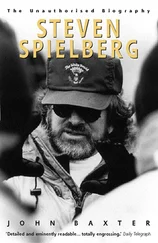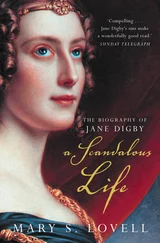By the summer of 1941, he and Virginia had returned to New York and were sharing the 14th Street loft. Robert Duncan was a frequent visitor. Disinherited by his adoptive father, architect Edwin Joseph Symmes, he’d become a homosexual hustler. As he explained to one friend, ‘the ideal evening was to find a Scarsdale or Westchester husband who wanted a quick, anonymous fling before returning home to the wife and kids, and who would rent a hotel room in which you could spend the remainder of the night’.
If he had no luck, Duncan would sometimes ‘crash’ at De Niro and Virginia’s loft. That he would seduce Robert was inevitable. They began having sex during one of Virginia’s brief absences and continued to do so secretly until Duncan was drafted at the end of 1941.
Once he’d left, De Niro confessed everything to Virginia. The double betrayal enraged and astonished her. They argued through the night, forgetting the thinness of the partitions dividing their space from others on that floor. Suddenly, in a pause, they heard a voice through the wall from a neighbouring studio. ‘I have been listening to you,’ it said. ‘I have been weighing all your arguments. I think that Virginia is absolutely fair and right, and the behaviour of Bob and Robert treacherous and ugly.’
Bob bolted out of the apartment and hammered on the nearest doors. There was no response from the three painters who lived there. For days, aghast that his secret was out, he ‘walked’, according to Anaïs Nin, ‘with shoulders bowed. He was silent. He looked haunted.’
Duncan endured only six weeks in boot camp in San Antonio before declaring his homosexuality and winning a discharge on psychological grounds. ‘I am an officially certified fag now,’ he announced proudly when he arrived back in New York. Unaware of Robert’s confession, he turned up at the 14th Street loft, only to be ordered out by a furious Virginia while a much-chastened De Niro looked on helplessly.
Like the rest of the ‘wash-ashores’, Valeska Gert also left Provincetown when the weather turned cold. In a basement at the corner of Morton and Bleecker Streets in Greenwich Village, she opened Beggars’ Bar, which, despite having no liquor licence, became a hangout for gays, radicals and the criminal fringe. Show people from uptown often turned up there to see Gert perform, or to watch visiting artists like dancer Kadidja Wedekind, whose father Frank wrote Lulu. Judy Garland, a regular, called Beggars’ Bar ‘the only cabaret in New York worth visiting’.
De Niro waited tables there. So did Tennessee Williams. Williams doesn’t refer to De Niro by name in his Memoirs , though one incident does offer glimpses of the lifestyle they shared.
‘Towards the end of 1941,’ writes Williams, ‘I was companion to an abstract painter in the warehouse district of the West Village. The friend was, nervously speaking, a basket case. I mean he was a real freak-out before it was fashionable to be one.’
One night Gert announced that, henceforth, the waiters would have to pool their tips, and share them with her. In the resulting fracas, the painter began hurling beer bottles. Gert went to hospital with a head wound, and Williams was out of a job. He moved in with the painter, who demanded that Williams cruise the streets for ‘carefully specified kinds of visitors’ as sex partners. Williams did so, helped by another friend, whom he identifies only as ‘the pilot fish’. The arrangement continued until some of the ‘visitors’ left with the painter’s valuables, and Williams was evicted.
Whatever his part in these events, De Niro was already committed to the gay lifestyle represented by Gert, Williams and their friends. He remained, however, attached to Virginia, even besotted by her.
Of the poems he wrote in this period, he chose to publish only six, all from ‘about 1941’. Floridly sensual, they’re reminiscent of Hart Crane (who committed suicide over his homosexuality) and Oscar Wilde.
Light powdered her eyelashes, gilded her teeth
lustered her hair
but she refused to enter
leaving in the doorway a pool from her milky body …
Two nuns brought incense to cover
the ends of her breasts
Strange peacocks bloomed upon her thighs
as only angels can …
The ‘her’ in De Niro’s verse is usually ambiguous. Later, in a series inspired by George Cukor’s Camille , he would write in the voice of Greta Garbo. But the sense of erotic fascination is palpable.
In December 1941, Robert and Virginia took the unexpected decision to marry. America’s entry into the war that month may have played a part, since De Niro was of draft age, but the decision was probably more quixotic. In their circle, marriages between sexually mismatched partners were almost the norm. Jackson Pollock entered a stormy marriage with fellow artist Lee Krasner, and even Robert Duncan took a wife – Marjorie McKee, the first, and probably only, woman with whom he had sex. They divorced a few months later, after an early pregnancy and abortion – a pattern not far from that which the De Niros would follow.
Three people effectively ran contemporary art in New York in 1942. They alone had the funds to buy and show new work. One was Alfred Barr, head of the Museum of Modern Art. The other two were an uncle and niece, who, far from enjoying any family feeling, were usually at each other’s throats.
Marguerite ‘Peggy’ Guggenheim had expected to inherit millions when her father died in the sinking of the Titanic in 1912. Instead the money went mostly to her uncles. She received only $450,000, which was held in trust. Although still a fortune, her comparatively meagre inheritance influenced Peggy to hoard every dime, and earned her, over the years, a reputation for cheapness. Her friend David Hare called her ‘avaricious to the point of comedy: the kind of person who goes from place to place, looking for the cheapest bottle of milk, and argues about who pays for the coffee’.
Drawn to the art world, Peggy moved to Europe and plunged into the bohemia of Paris and London. In London, at the urging of her friend Marcel Duchamp, she opened a gallery, Guggenheim Jeune, which showcased mostly Surrealist art. Few of its shows made money, but Peggy insisted artists sign a contract agreeing to let her buy any unsold pictures at $100 each – supposedly to encourage the artists but actually to build up a collection cheap.
In 1939 she fled to New York, towing the painter Max Ernst, whom she later married. Providently, she’d sent ahead her collection, part of which she put on show in 1942 at the gallery called Art of This Century which she’d had built on West 57th Street. Art of This Century had curved wooden walls, and lighting of startling originality. The paintings, unframed, hung on metal cantilever arms, each surmounted with a photograph of the eyes of the artist. Other canvases circulated on a conveyor belt, popping into sight for a few moments only.
Only a few blocks away, at 24 East 54th Street, Peggy’s uncle, Solomon R. Guggenheim, had established the Guggenheim Foundation. It, and Guggenheim himself, were dominated by the Baroness Hilla Rebay von Ehrenwisen, his mistress.
Thirty years younger than he, Rebay relished the power conferred by her lover’s wealth. Dressed like a Hollywood columnist in amazing hats and outfits that were like theatrical costumes, Hilla Rebay queened it over the Foundation and its shows, which mostly exhibited her own work and that of her friends. It was also Rebay’s idea to christen their New York headquarters ‘The Museum of Non-Objective Painting’, a reproof to the Museum of Modern Art, which was just round the corner.
Shrewd artists played Barr, Rebay and Peggy Guggenheim against one another. Peggy could present shows, recommend artists to other gallery-owners, and even buy paintings – Jackson Pollock painted a mural for her Manhattan home – but she was notoriously slow to spend actual money. Rebay, on the other hand, had none of Peggy’s taste, but offered cash to anyone who pledged allegiance to the Guggenheim Foundation. She funded the school set up on 8th Street by Hans Hofmann, who made no secret of his scorn for Peggy’s speciality, Surrealism.
Читать дальше












